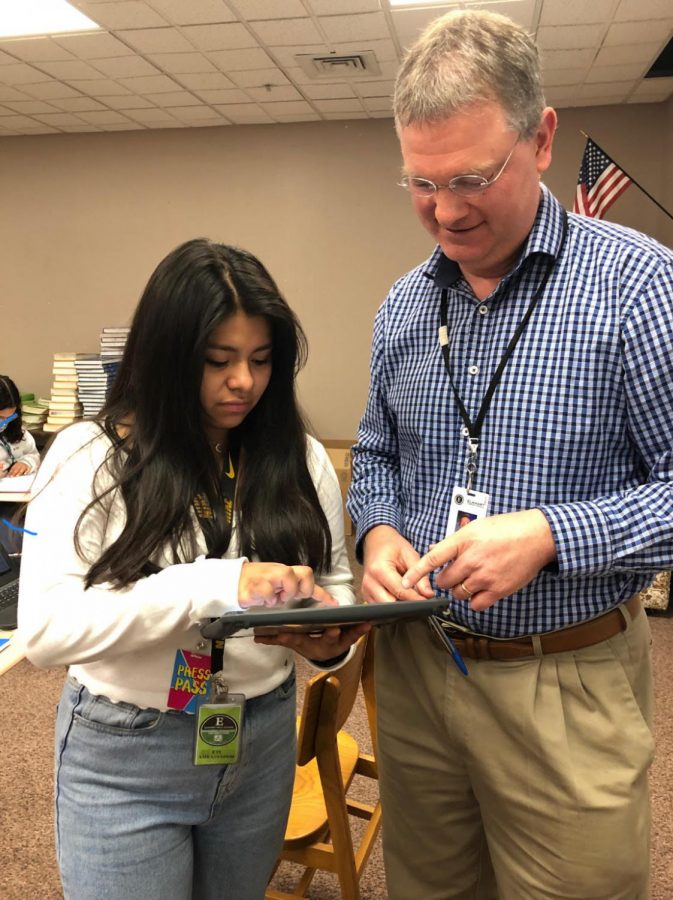Technology: A Resource Or A Crutch?
December 17, 2021
As technology continues to grow and progress, more and more schools are adding technological resources to their classrooms to help teach students.
Resources like iPads, computers, and so much more have been implemented into tons of schools all over the world. As society keeps on advancing and creating new technology, it has become a critical part of people’s’ lives. This is why it is so crucial for teachers to educate students on how to properly use these newfound tools and resources. Mr. Alex Holtz, a math teacher at Elkhart High School, explained why using technology in the classroom is beneficial. He pointed out, “Technology can be a time saver and also allow us to look deeper into situations. Also, many current students will have jobs involving technology in the future, so they should become proficient with it sooner rather than later.”
While some of these resources have really benefited students during the learning process and in everyday life, they have also presented some issues. For example, with such extensive access to answers, it has allowed people to cheat much easier than in the past. This, however, leads to much debate on what technological resources constitute as cheating. Holtz stated his opinion on the matter: “It qualifies as cheating if students would not want their teacher to know they used technology to accomplish tasks for their class. If the students have a question whether leaning on technology for an assignment is inappropriate, they should ask their teacher. Developing a sense for when to seek clarification about the use of technology is part of what we need to practice with technology.” This is a great point. If a student doesn’t feel confident in what he or she is doing, then the student probably shouldn’t be doing it. Of course, it all depends on how these students use certain resources to help them. Simply finding answers doesn’t help anybody, but using a graphing calculator or a certain educational software can (more often than not) be a great learning tool.
Finding a good balance between traditional and technology-based teaching is also very significant for educators to learn how to do. Holtz explained, “Students need to be able to think and do many things on their own without the assistance of technology. If students are instructed in such a way that they cannot think for themselves and do some things without technology, their teachers are employing technology too often.” Finding a good sweet spot between using technology in the classroom and having students problem solve on their own is a crucial so that these resources do not become a burden (rather than an aid) to students. Holtz does this in numerous ways: “Sometimes we will do lessons or assessments that do not allow for the use of technology. Every now and then, I will let students decide if they will use technology or not depending on their future goals.”
Technology has always had it’s pros and cons, so learning how to use it in the most efficient way has been a bit hard in both the classroom and outside of it. Holtz would like to remind people: “Technological advancement is happening so fast that we cannot wait to adjust our instruction for a generation of students and teachers. Some of our teaching goals need to involve helping students become comfortable with the mechanics and ethics of technology usage.” Therefore, it is vital for teachers to start adjusting their curriculum so that students can understand certain concepts without technological help and get a firm grasp on how to use technology in the most effective ways possible.








